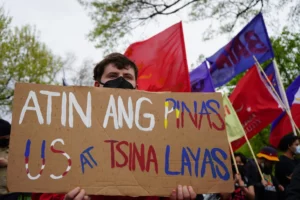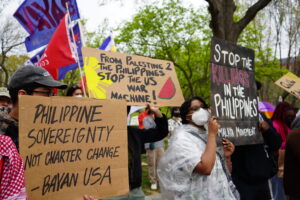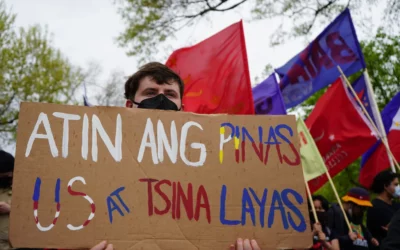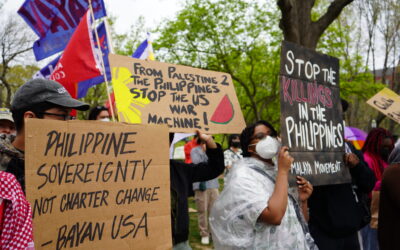By DAWN CECILIA PEÑA
Additional research and graphics by Gabryelle Dumalag
Bulatlat.com
MANILA – Farmers groups decried the possible displacement of thousands of agricultural workers due to the planned liberalization of the sugar industry.
In a statement, the Unyon ng mga Manggagawa sa Agrikultura (UMA) and the National Federation of Sugar Workers (NFSW) said that agricultural workers in the sugar industry nowhere to go as millions of Filipinos already lost their job during the pandemic.
A study commissioned by the National Economic and Development Authority (NEDA) identified specific steps that the Sugar Regulatory Administration (SRA) or the Department of Agriculture can do as regards the sugar industry’s liberalization.
NEDA advised the concerned agencies to determine the pace of decreasing quantitative restrictions on imported agricultural products, the parameters for annual sugar import volumes and the appropriate monitoring and evaluation mechanisms.
The SRA estimates that there are at least 88,000 sugarcane farmers in the country. But farmers groups said numbers could be higher if the sakadas or seasonal farm workers are included.
Heading toward extinction?
NEDA said that the sugar industry contributes about P86 billion ($ 1.75 billion) to the economy, especially with new business opportunities in bioethanol, muscovado and biomass-based electric power, among other products. The industry, however, has “declined over time,” according to NEDA.
NEDA attributed the decline to fragmented land ownership, lack of improved cane varieties, poor soil quality, inadequate irrigation, low farm mechanization and inadequate financial support, among other factors. NEDA also noted that the SRA is ill-equipped to face the challenges confronting the industry.

Looking into the General Appropriations Act, the SRA experienced a decline in its annual Sugarcane Industry Development Program budget in the last five years.
From P1.4 billion ($28 million) in 2017, the SRA was provided with only P712 million ($14 million) in 2021, representing a 49.5% decrease. In 2019 and 2020, the SRA received only P500 million ($10 million), the lowest received in recent years.
It is not clear if the SRA’s low budget is enough to fund the Sugarcane Roadmap 2020, a medium-term plan for the Philippine sugarcane industry released in September 2015.
The plan aims to achieve “an active community of service providers to meet the needs of farmers, millers and workers” and “a more efficient, skilled, and fairly compensated labor sector with access to meaningful socio-economic support services and opportunities.”
These were to be realized through “securing funding for identified Productivity Improvement Programs and Projects” and “providing easier access to government financing for crop loans, farm mechanization, irrigation systems, farm-to-mill roads, research, development, and extension, etc.”
Dismal conditions of sugar workers
Peasant groups denounced the sugar workers’ slave-like working conditions.
In Sta. Maria Isabela, sugar workers are paid only about $1.00 or even less for an entire day of weeding, planting, and patching. Some receive about $2 to $5 daily for fertilizer application and for harvesting.
Read: As dead season continues, sugar workers occupy land for survival
When the pandemic happened, sugar workers were among those affected by the shutdown of sugar mills or distilleries and bio-ethanol plants such as the Bukidnon Sugar Milling Company and Emperador Distillery in Batangas. Cebu’s lone sugar mill has closed due to the pandemic.
Proposals for a P100 ($2) daily wage emergency relief allowance for agricultural workers and a P15,000 ($304) agricultural production subsidy for farmers and fishers were rejected by the House Committee on Appropriations.
According to Kilusang Magbubukid ng Pilipinas (KMP), the P15,000 ($304) agricultural production subsidy is necessary to help farmers continue their agriculture-related activities.
“Production costs have unbearably increased – farm inputs like seeds, fertilizer, and pesticide continue to increase, water pump use and farm machinery rental are affected by weekly fuel price hikes,” KMP said in a press statement.
On June 23, UMA and NFSW filed a complaint with the International Labor Organization (ILO) regarding grave labor rights violations under the Duterte administration.
Read: ILO help sought over gov’t crimes against Filipino agricultural workers
State terror
Instead of helping the sugar workers, the government has responded by spreading terror in their communities, including the militarization of a sugar field in Sta. Maria. This, UMA said, persists and “demonstrates the urgency of our complaint.”
According to Cita Manguelod of UMA-Isabela, their protests demanded reinstatement, job security, higher wages, and employment benefits at a sugarcane plantation run by Green Future Innovations, Inc. (GFII). They were met, however, with vilification and threats of violence by state armed forces.
GFII has been producing bioethanol from sugarcane. The latter is harvested from cane fields leased to the corporation by Sta. Maria Mayor Hilario Pagauitan.
“Since June 16, soldiers from the 95th IB have been visiting selected sugar workers daily, interrogating them about UMA’s typhoon-related relief operations and claiming they had links to the New People’s Army, the armed wing of the revolutionary Communist Party of the Philippines,” UMA said.
There were also attempts to frame the sugar workers as rebel surrenderees when several unionists refused to follow the 95th IB’s instruction to clear their names at the barangay hall in Barangay Calamagui North and Barangay Bangad.
“This is not just union-busting, it is full-blown state terrorism,” Antonio Flores of UMA said, adding that Isabela’s sugar workers have been organizing to protest their inhumane $0.30 daily wage, a far cry from the region’s minimum wage of $7.00.
The peasant leader called on the ILO to pressure the Department of Labor and Employment to talk to them. He also asked that peasant advocates and human rights defenders stand with the oppressed sugar workers. (JJE, DAA)










0 Comments